Perhaps some would have simply thanked God for such a miracle healing and gone about their lives as before. However, for John Stevens, this experience formed the basis of a faith in God that was unshakable, a faith that knew God could—and would—reveal Himself to anyone who would believe. This was the message that John desired to share with the world, and it is found throughout his sermons and teachings: Every individual can have a personal walk with God.
Stevens spent much of his childhood years seeking God. As an example, he participated in a winter revival in a tent with a wood stove and a sawdust floor. John would remain most of each night there, praying and seeking God.1 He continued to attend revival meetings as he pursued the presence of the Lord.
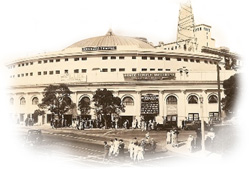 In 1929, John’s father decided to attend L.I.F.E. Bible College in Los Angeles at the famed Angelus Temple, founded by Aimee Semple McPherson. During this time, John Stevens attended many of the same classes his father did, soaking in the teaching and the anointing of the professors and students. Stevens was thirteen when his father completed his studies in the spring of 1933, at which time the family moved back to Iowa. Upon their return, Stevens’ father founded the Christian Tabernacle church in the town of Washington. Young Stevens taught the children’s Bible study and helped prepare his father’s sermons.
In 1929, John’s father decided to attend L.I.F.E. Bible College in Los Angeles at the famed Angelus Temple, founded by Aimee Semple McPherson. During this time, John Stevens attended many of the same classes his father did, soaking in the teaching and the anointing of the professors and students. Stevens was thirteen when his father completed his studies in the spring of 1933, at which time the family moved back to Iowa. Upon their return, Stevens’ father founded the Christian Tabernacle church in the town of Washington. Young Stevens taught the children’s Bible study and helped prepare his father’s sermons.
Later in 1933, Stevens had another extraordinary meeting with the Lord. During an all-night session of prayer, he received the Holy Spirit and saw himself—in a vision that lasted for several hours—speaking to many people in many languages and in many nations.2 In this experience, the Lord commissioned and anointed him into his ministry of speaking the Word. Shortly after this, Stevens wrote out his deep commitment to Christ in “To Be a Christian“.3 He was fourteen years old.
Stevens started his first church in Gladwin, Iowa, in 1935 while still attending Washington High School.4 After graduation, he traveled locally as an evangelist. With roots in the Pentecostal and Foursquare Gospel movements, he was influenced by the teaching of ministers such as Smith Wigglesworth, Aimee Semple McPherson, Billy Sunday, Ruth Paxton, Paul Rader, and others.
 Stevens was ordained by A.W. Kortkamp at Full Gospel Temple, Assembly of God, in Moline, Illinois on September 9, 1937.5 He then continued his evangelistic quest, “town hopping” by rail throughout the Midwest and West Coast regions,6 where he started several churches that still stand today. In the early 1940s, Stevens enrolled at the University of Dayton, Ohio. While attending Dayton, he hosted a weekly radio broadcast and taught at the Dayton Missionary Bible Institute, where he served as an assistant dean. On May 5, 1945 Stevens graduated from American Bible College of Illinois with a Doctorate of Theology. He later continued his education and in 1947 earned a Masters of Divinity (then known as a G.Th.) from L.I.F.E. Bible College at Angelus Temple in order to obtain his permanent ordination from the International Church of The Four Square Gospel.
Stevens was ordained by A.W. Kortkamp at Full Gospel Temple, Assembly of God, in Moline, Illinois on September 9, 1937.5 He then continued his evangelistic quest, “town hopping” by rail throughout the Midwest and West Coast regions,6 where he started several churches that still stand today. In the early 1940s, Stevens enrolled at the University of Dayton, Ohio. While attending Dayton, he hosted a weekly radio broadcast and taught at the Dayton Missionary Bible Institute, where he served as an assistant dean. On May 5, 1945 Stevens graduated from American Bible College of Illinois with a Doctorate of Theology. He later continued his education and in 1947 earned a Masters of Divinity (then known as a G.Th.) from L.I.F.E. Bible College at Angelus Temple in order to obtain his permanent ordination from the International Church of The Four Square Gospel.
Citations
1. Stevens, John Robert: “The Sin of Not Loving Him More”, Putting It All Together—Day Of Atonement, 1982,
This Week, Vol. XIII, No. 22: The Living Word, 1982.
2. Stevens, John Robert: Audio Release, Appropriate What’s Yours (Re-release): The Living Word, 2000. 2000-0417-1R
3. Stevens, John Robert: “To Be a Christian”, To Every Man That Asketh: John Robert Stevens, 1959; The Living Word, revised 1971.
4. Stevens, John Robert: Audio Release, Bible Book by Book: New Names—Isaiah 62: The Living Word, 1978. RN05A018R
5. Stevens, John Robert: Audio Release, He Gave Gifts to Men—Psalm 68: The Living Word, 1980. 80121603R
6. Stevens, John Robert: Audio Release, Freedom Must Be Channeled: The Living Word, 1996. 96060506R












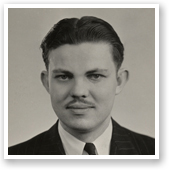
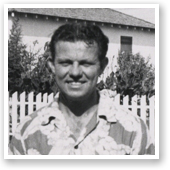
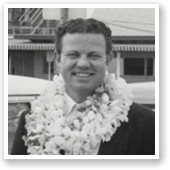
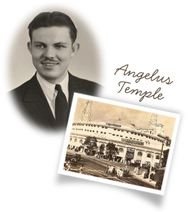
 Seeking the Lord in His Youth
Seeking the Lord in His Youth Website copyright © 2010 - 2025 by The Living Word, a California nonprofit corporation. All rights reserved.
Website copyright © 2010 - 2025 by The Living Word, a California nonprofit corporation. All rights reserved.